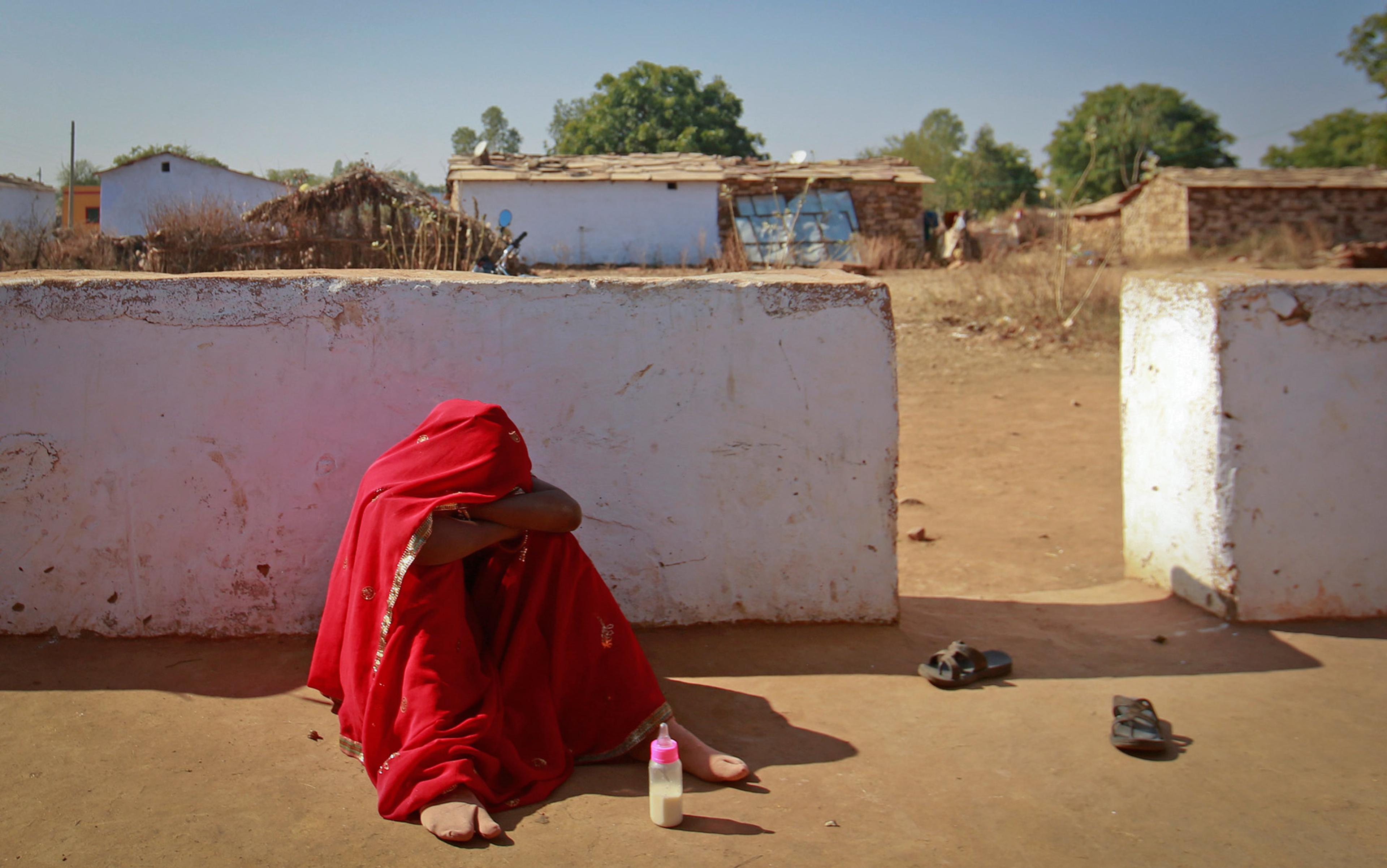A population crisis is unfolding – in my family. My paternal grandparents were born in India and had 10 children. I did my part to keep our lineage going (my wife was also involved) yet over the course of three generations, my family’s ‘fertility rate’ plummeted from 10 to less than 1.
During this same period, India’s population exploded from 350 million to 1.4 billion, in 2023 surpassing China as the most populous country in the world. But my family’s story mirrors India’s demographic transition. In the mid-20th century, when my parents were born, India’s fertility rate was 6. It’s now 2.
India is a striking case, but fertility rates are declining everywhere. Between 1950 and 2021, the global fertility rate fell from 4.8 to 2.2. American women have an average of 1.6 children. Japan’s fertility rate is 1.2, South Korea’s a startling 0.75.
The global population is still growing, for now. But demographers project that humanity’s numbers will peak near the end of this century before beginning a steep decline. I won’t be around by then, but my children will live to see the peak and peer over the precipice.
Is this a crisis?
Some say it’s a blessing. Fewer people means fewer carbon emissions. Not only that, our collective pie could be divided into larger pieces. In theory, we’ll enjoy less competition for resources, more affordable housing, and higher wages due to labour scarcity. From this perspective, population decline isn’t a problem but a solution.
Alas, these hopes are misplaced.
The path forward on climate change is clear: rapid decarbonisation. We must transition as fast as possible from fossil fuels to renewable energy sources. If we fail, the future will be disastrous, and population size becomes irrelevant. If we succeed, additional humans won’t impact carbon emissions.
Moreover, the timelines don’t match. Climate change demands solutions within the next few decades; population decline won’t materialise until the next century. Having fewer humans arriving then won’t retroactively cool the planet.
Imagine, however, that population decline accelerates. That would worsen rather than salvage our climate prospects. Young people are more likely to support bold environmental policies, become climate activists, and invent green technologies. A shrinking, ageing population means fewer contributors to these efforts.
Hospitals will burst at the seams while playgrounds empty
This points to the fundamental reason that population decline will be a curse rather than a blessing: the loss of young people.
Schools will be converted to elder-care facilities. Hospitals will burst at the seams while playgrounds empty. This demographic skew will reshape every aspect of our world, from economics and innovation to culture and social progress.
Consider social security, often in the US misconceived as a savings account for retirement. In fact, tax contributions from workers are redistributed to retirees – a system of intergenerational cooperation that depends on a balanced age distribution. As the population ages, this system will crumble.
The problems run deeper. Fewer working-age adults entails a shrinking tax base, even as the need for public services swells. Education, healthcare, infrastructure, public safety and welfare will be underfunded. The pie will shrink. And as lifespans grow, the demand for healthcare will increase while the number of healthcare workers decreases. Vulnerable groups – not just the elderly but also those who experience poverty or disability – will suffer most.
To thrive, societies need young people. New generations drive economic growth, pioneer technologies, challenge outdated moral views, create art, and advance social change. They’re more likely to take risks, embrace new ideas, and imagine different futures. When we talk about population decline, what we’re really talking about is the gradual dissipation of this vital social force.
Many assume the solution is simple: open the borders and demographic problems will solve themselves. Yet while immigration can prevent domestic population decline, it can’t reverse imbalances in population structure. Research suggests that higher rates of immigration can prevent a nation’s population from shrinking but not from ageing. The mathematics is simple: immigrants are younger than the average citizen but older than newborns.
More fundamentally, immigration won’t help because population decline is a global problem. When wealthy nations import young workers from poorer nations, they’re effectively exporting their low fertility rate, exacerbating the global problem rather than solving it. Take my parents and their siblings, who emigrated to the West in their early 20s. (At that age, I still had not emigrated from my parents’ basement.) Adopting new homes, they also adopted new family models – none had more than two children. And their children had even fewer.
Progressive tax reform could boost public revenues but this is a tall order
Even so, economic and health repercussions may be tackled in other ways. Retirement ages could creep upward. Advances in medical technology might reduce age-related illness and disability, enabling longer healthy working lives. Automation of healthcare services might compensate for the dearth of healthcare workers.
More ambitious solutions are possible. Progressive tax reform could boost public revenues, offsetting the shrinking tax base and bolstering social programmes. This is a tall order, given that previous attempts have been unsuccessful. But since older people are more likely to vote, perhaps we’ll summon the political will.
These solutions, however, address only the surface. A shrinking, ageing population poses even deeper challenges, ones far more resistant to policy solutions.
Population growth drives economic growth. More people means more workers, more consumers, and more innovation. When populations expand, economies of scale become possible – efficiency increases and wealth multiplies. Younger generations are more likely to start new businesses, adopt novel technologies, and increase productivity. Historically, even relatively small populations have been economically vigorous so long as they had a high proportion of youth.
As fewer young people are born to replenish society, we’ll face a shrinking workforce, weakening consumer demand, and the unravelling of economies of scale. We’ll also lose the very demographic that drives economic development. Young people don’t just fill jobs; they reimagine how work should be done. They don’t just participate in the economy; they reshape it. Ageing societies will experience not just economic stagnation but degrowth.
Some people welcome this prospect, seeing degrowth as an antidote to climate change and capitalist exploitation. But this perspective ignores crucial realities. Economic growth can be decoupled from carbon emissions. More importantly, degrowth would devastate developing nations. Economic growth dramatically reduced global poverty. Reverse that growth, and poverty will resurge.
Most breakthrough discoveries come from younger researchers and entrepreneurs
Some think AI or another emerging technology can stimulate economic productivity. But the effects of population decline extend far beyond markets and material wealth.
When societies are large and interconnected, they’re able to generate new ideas, recombine old ideas in new ways, and forge new divisions of cognitive labour. A smaller population will thus shrink what the evolutionary theorist Joseph Henrich in The Secret of Our Success (2015) calls our ‘collective brain’. We’ll forgo not just particular innovations but entire fields of enquiry, impacting everything from basic research to practical applications in engineering and medicine. New technologies could potentially sustain economic productivity, but that will be harder if a shrinking population is technologically less innovative.
Young people aren’t just members of society’s collective brain; they’re its most innovative neurons. Most breakthrough discoveries come from younger researchers and entrepreneurs. Social progress, similarly, depends on young people rejecting prevailing bigotry and replacing older generations. For example, support for same-sex marriage is higher among Gen X and Millennials than in older generations. If the proportion of young people declines, so will our moral and political values.
You think we live in a decaying gerontocracy now? Just wait.
The impact on creative activity will be no less profound. Young people have always been the main source of art, fashion, music, literature and film. As their numbers diminish, the future will become a cultural wasteland. Imagine the 1960s without rock-and-roll, the 1970s without Hollywood auteurs, the 1980s without street art, or the 1990s without hip-hop.
More generally, young people are optimistic, willing to take risks, and open to new experiences. These traits drive cultural progress. An ageing society will become risk-averse, focused on preserving wealth rather than creating it, and resistant to necessary change.
I find myself in strange company. Right-wing pronatalists want to outlaw abortion, punish childlessness, and force women to marry young and forsake careers outside the home. In other words, they want to make fertility rates great again by restoring the patriarchal order of the early 20th century. Some of these pronatalists are only really worried about white population decline. (They’re not worried about my family’s fertility rate.) Many observers conclude that population decline isn’t a crisis – it’s a moral panic.
But just because a cure is toxic doesn’t mean the disease isn’t real.
If populations decline, humanity will unravel. Societies will become less productive and poorer, vulnerable people will lose crucial social support, innovation will slow, and values will deteriorate. Given my family’s trajectory, I might not have any descendants by the time the global population crashes, but the world – what’s left of it – will suffer enormously if we do nothing.
We have a shared responsibility to create conditions where people want to have children
To be clear, I don’t much care whether my own family lineage endures. My two children are perfect. That’s what I tell my wife too, but she argues we should have another. Lately, she’s been appealing to my conscience: if population decline is truly dire, shouldn’t I do my part for humanity?
The answer isn’t individual sacrifice. No one has a duty to procreate (conveniently for me). Rather, we have a shared responsibility to create conditions where people want to have children and can have all the children they want. This means grappling with the gendered division of reproductive labour and supporting caregivers. That’s how pronatalism can be a progressive movement.
The first step is to understand the source of the problem.
The global fertility rate held steady around 5 until the 1960s. Today, it has fallen to 2.2. In all developed countries, fertility rates are well below 2.1, the ‘replacement rate’ needed to maintain a stable population.
Why this dramatic decline?
As societies grow wealthier, women gain access to education and careers. They secure reproductive freedom and marry later, if at all, encouraged by reproductive technology to postpone family formation. Teen pregnancy becomes rare. People concentrate in cities where housing costs soar and living spaces shrink. Extended families scatter, taking with them crucial support. Meanwhile, parenting itself has become more intensive and expensive but less valued by society. Childrearing also competes with growing access to luxuries such as travel, hobbies and creative pursuits. (Smartphones are more entertaining than kids.)
A great tragedy of our species is that procreation is an oppressive institution
Much of this fits my family’s story. My grandparents were born in India and died there, their progeny relocating to urban centres across the English-speaking world. None of my grandparents attended university, while nearly all their grandchildren did. One grandmother married at 16 and had her first child a year later. Only one of my cousins had children before 30; some prioritise careers or leisure, choosing not to marry or reproduce.
A great tragedy of our species is that procreation is an oppressive institution. Rising freedom and prosperity have provided women with more attractive options. This explains why fertility rates crashed in East Asia, where marriage and family remain particularly restrictive while economic opportunities for women have blossomed.
It’s hard to make predictions, especially about the future. But the tendency for fertility rates to fall as countries become wealthier and freer is as close as you can get to a law of nature in demography. So, as poor countries continue to become wealthier, their fertility rates are destined to fall below replacement too.
To avoid demographic collapse, Right-wing extremists would drag society backwards. They want to ban contraception, turn women into breeders,, and promote heterosexual marriage while ignoring its oppressive structure. We must reject these coercive proposals.
Fortunately, coercion isn’t necessary to avert population decline. In many countries, a gap separates intended fertility and actual fertility. Fertility rates will recover if people are empowered to have as many children as they want.
Yet most factors driving fertility decline are overwhelmingly positive – affluence, economic opportunities, reproductive freedom. We should try to design wealthy, free and equal societies, even knowing that these very achievements tend to lower fertility rates.
Perhaps I’d want a third child if I’d found my partner and settled into a permanent job in my mid-20s
Our central challenge is to increase fertility while preserving and expanding valuable social gains. We need innovative approaches that separate high fertility from its historical causes – poverty, oppression and gender inequality. The solution isn’t to reverse progress but to reimagine family formation in a progressive society.
Sometimes I’m asked (for example, by my wife) why I don’t want a third child. ‘What kind of pronatalist are you?’ My family is the most meaningful part of my life, my children the only real consolation for my own mortality. But other things are meaningful too. I want time to write, travel and connect with my wife and with friends. Perhaps I’d want a third child, or even a fourth, if I’d found my partner and settled into a permanent job in my mid-20s instead of my mid-30s.
My story is unique, of course, but I see it reflected in the lives of others. Raising children has become enormously expensive – not just in money, but also in time, career opportunities and personal freedom. Effective solutions must address these costs.
Sweden offers what seems like a blueprint for progressive pronatalism: childcare subsidies, parental leave, and family support programmes. Yet the results are sobering. Sweden’s fertility rate sits at 1.5 – well below replacement. While these programmes may have prevented even steeper declines, they haven’t reversed the trend. Other countries – from Singapore and Taiwan to Poland and Hungary – have implemented similar policies without success.
France offers a more promising model. With a fertility rate of 1.62, it hasn’t maintained replacement either but does surpass its European neighbours. The French approach is like Sweden’s except even more generous, pronatal expenses accounting for 3.5-4 per cent of its GDP. Tax benefits increase with each additional child – essentially paying parents more as their families grow.
The US briefly experimented with a lite version of France’s approach through the COVID-19 pandemic-era expanded child tax credit. Its lapse represents a missed opportunity. The programme should not only be restored but dramatically expanded. Other countries should follow suit.
Social norms about family size and parenting prove remarkably resistant to change
More broadly, the world needs to deploy different support programmes, measure their impacts, and scale up what works best. The best interventions may increase fertility rates only marginally, but that would be a form of harm reduction. Moreover, replacement becomes possible if marginally effective solutions are deployed in concert. The costs may be high but the benefits are worth it.
Another, complementary approach is to make housing more affordable so that young people can leave the nest and afford spaces large enough to contain the families they’d like to create. Economists warn that subsidies make housing less affordable by driving up demand. A better policy is to increase supply by eliminating restrictive zoning laws and other regulations that limit new multi-family housing. (YIMBYs and pronatalists unite!)
These policies may not be enough by themselves. Social norms about family size and parenting prove remarkably resistant to change, persisting even after the conditions that shaped them have shifted. This means we need to couple robust policy interventions with efforts to reshape cultural attitudes about parenthood.
One way to reduce parenting costs is for men to do their fair share, as the Harvard economist and Nobel laureate Claudia Goldin argues. Despite a century of rising gender equality, American women in heterosexual relationships still perform roughly twice the domestic labour of their male partners, even when both work outside the home. Add children to the equation, and this imbalance becomes crushing. (Childless readers: imagine multiplying your household workload by a factor of three or four.)
Meanwhile, modern parenting has evolved into an increasingly demanding enterprise: coordinating enrichment activities, monitoring academic progress, managing mental health, ensuring physical safety, and maintaining constant vigilance. No wonder many stop at one child. While some aspects of intensive parenting reflect novel challenges or deeper relationships with children, others are unnecessary or unhealthy. Dialling back expectations would boost fertility rates along with parent and child wellbeing, as Tom Hodgkinson argues in The Idle Parent (2010).
Parenting becomes more difficult when extended families disperse
Career compatibility presents another major hurdle. But workplaces can adapt. Imagine offices designed with family life in mind: flexible schedules that accommodate parent-teacher conferences, on-site childcare, and cultures that celebrate rather than penalise family commitments. For example, expansion of remote work seems to have fostered a pandemic baby bump in the US.
Historically, our species has relied on cooperative parenting, as Sarah Blaffer Hrdy writes in Mothers and Others (2011). Fertility rates have declined in part because parenting becomes more difficult when extended families disperse. Many young people want the freedom to pursue careers far from home and escape family control. But new parenting cooperatives are possible, with friends living together or neighbours sharing duties. Such arrangements are already being attempted – for example, in pandemic ‘pods’ – and, if successful, they might catch on.
Changing ingrained cultural patterns won’t be easy. But cultural shifts often follow material incentives. For instance, smart policy could help reshape workplace practices, with governments compensating employers for costs. While we can’t predict exactly how such changes might unfold, we can try to encourage more sustainable and equitable parenting. We should at least think harder about it.
How urgent is our demographic problem? History offers a sobering perspective: no developed nation has ever seen its fertility rate fall below replacement and then recover. The mathematics of population decline is unforgiving, as delays now compound into massive differences later. Every year we postpone action, the challenge becomes more daunting.
Yet we shouldn’t surrender to panic. The most severe consequences of population decline won’t materialise until the 22nd century. While we must think ahead, we shouldn’t be confident about shaping the distant future, which reduces the expected value of our efforts. Unknown factors might intervene and restore fertility rates to replacement levels. Or more pressing problems may intrude and demand the bulk of our attention.
Population decline is a serious challenge, but it’s not the civilisational emergency that extremists claim. This reality suggests a measured, two-track approach.
Every major advance in human history – technological, cultural, moral – has been driven by youth
First, we should undertake policy and cultural interventions that make sense independently of their impact on fertility. Expanded parental leave, subsidised childcare and pronatal tax policies would support caregivers even if they didn’t boost fertility rates. Likewise, increasing the supply of housing would benefit those suffering from poverty or homelessness. Beyond that, we have every reason to encourage men to contribute more to childcare, make parenting less intensive, and redesign workplaces to be more family-friendly. These interventions offer clear benefits with minimal downside risk.
Second, we should invest in researching and testing more ambitious and radical approaches, from cultural innovations surrounding cooperative parenting to technological revolutions in assisted reproduction. Perhaps the most effective solutions, ultimately, will relieve the costs of childrearing through artificial wombs or AI nannies. Let scientists and policy experts explore bold approaches while ensuring rigorous evaluation of their effects. Ask politicians, humanists and the general public to critically discuss them.
Still, pronatal policies raise hard questions. Unless the gendered division of labour changes radically, increasing fertility rates may expand burdens on women and entrench traditional gender norms. Given the gap between intended and actual fertility, the benefits of having children may outweigh these moral costs. But we can’t pretend to fully understand the tradeoffs. We need to study not just whether pronatalism can be effective but also under what conditions it is ethically defensible. Philosophers have work to do.
At bottom, progressive pronatalism isn’t just about increasing our numbers – it’s about preserving society’s engine of progress. Every major advance in human history – technological, cultural, moral – has been driven by youth.
Maintaining this vital force will be possible only if population decline doesn’t remain solely a preoccupation of extremists. Too much depends on finding humane solutions. We need approaches that contribute to human flourishing while preserving the advances in freedom and equality that precipitated declining fertility. The future of humanity – and of my unlikely grandchildren – depends on striking this delicate balance.






